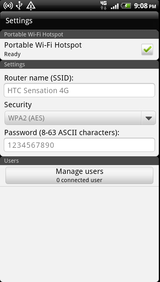
[How to] Root Your Samsung Galaxy Tab
Being so glad owning that Samsung’s 10.1-inch “Galaxy Tab 2″ tablet PC powered with TI OMAP 4430 chipset, Dual-core 1.0GHz ARM Cortex-A9 processor, 1GB of RAM and PowerVR SGX540 GPU? Well, do not be so happy before you can liberate that high-end device (
read: rooting). So far you may can’t find a one-click root tool to put your Gtab 2 10.1″ rooted.
But luckily there is a nice easy method shared by XDA senior member “Weltwon” who has been so successful achieving root on his Galaxy Tab 2 10.1 GT-P5113 model.
The method is involving Windows-based PC with ODIN v1.85 to flash custom cooked recovery and CWM Root files. That’s all and the whole process is pretty well standard for a Samsung device. Just in case if you want to repeat his action, simply read following steps.
P.S: Make sure you make a full Backup of your GTab 2 before proceeding. We hold no responsibilities of what may and may not happen.
Pre-requisite
- Samsung Galaxy Tab
- Windows Computer
- Make sure you have Samsung Kies is installed but also make sure it is not running now.
- Make sure your tablet is not connected to PC yet.
Full Steps How To Root
This method works on Galaxy Tab 2 10.1 :
– Model GT-P5113 (Tested)
– Model GT-P5100 (Tested)
– Model GT-P5110 (May work)
Step 1.
Download all necessary files first:
– Download ODIN version 1.85 (Odin3-v1.85_3.zip)
– Download needed recovery.tar.md5
– Download needed cwm-root-gtab2.zip
(GT-P5110 European model use this cwm-root-gtab2a.zip file)
Step 2.
Now copy the cwm-root-gtab2.zip (or cwm-root-gtab2a.zip) file to the ROOT of your external sdcard which is located at “/mnt/extSdCard” not in “/mnt/sdcard”.
Step 3.
Now reboot your GTab 2 into Download Mode. To do that simply turn it off and during restart push and hold down the Power + Volume UP/RIGHT buttons at the same time.
p.s: Volume Up / Right button is the side away from from the power button (not the side. closest to the POWER button).
Step 4.
On your tablet’s screen you’ll then see a blurb with yellow triangle. When it appears go ahead push Volume down button to continue into download mode.
p.s:
– Make sure you have Samsung Kies is installed but
– also make sure it is not running now.
– Make sure your tablet is not connected to PC yet.
Step 5.
Now extract the content of “Odin3-v1.85_3.zip” and you’ll have “Odin3 v1.85.exe” file. Simply double-click it to run Odin.
Step 6.
Now connect your Galaxy Tab 2 10.1″ to PC using proper USB cable.
Step 7.
Once connected >> click the PDA button on ODIN >> select the recovery.tar.md5 file >> then click the START button.
Wait for ODIN to do its job. Your GTab 2 will also reboot indicating the task’s done by ODIN.
Step 8.
Once done. Disconnect your GTab 2 from PC.
Step 9.
Now put your GTab 2 in Recovery Mode. To do that, simply turn your tablet off and restart it in recovery mode by pushing and holding the “Power” and “Volume Down” buttons at the same time. (Volume Down button is the side closest to the POWER button).
You’ll then see Samsung Tab 2 10.1 logo appears which this time you can release the power button but continue holding the volume button for a few more seconds until you see the blue CWM v5.5.0.4 text appears.
Step 10.
You should now in Recovery Mode which in this mode you can use your tablet’s Volume Up or Down to navigate through its menu and use Power button to select.
Step 11.
Now select “install zip from sdcard” >> choose the cwm-root-gtab2.zip file stored in the root of your sdcard.
Step 12.
That’s it and wait until CWM flash that rooted image file. Once done, select “Reboot system now”.
Step 13.
Once rebooted your GTab 2 should now be rooted but you better boot into CWM again and make a full Nandroid backup.
Once again, that’s it. Congratulation for your rooted Galaxy Tab 2 10.1. It means your tablet is now liberated and you can feel free to install root-only apps or even flashing custom ICS ROM on it (if any).
In case if anything got wrong, make sure you pay a visit at this XDA thread here for more further queries.
Re-blogged by: Adamu Fun Bala CSA; MD/CEO Lynxx Systems & Communication Technology LTD; 08035158065














